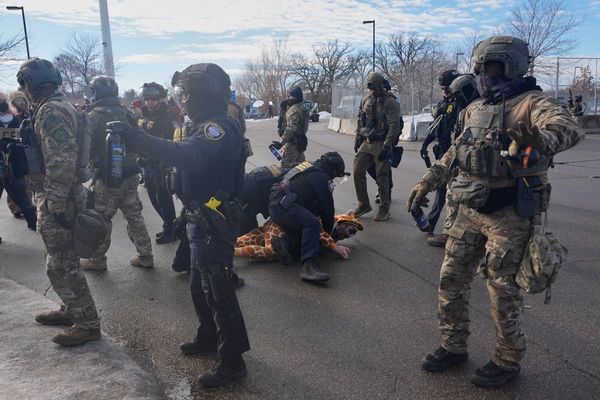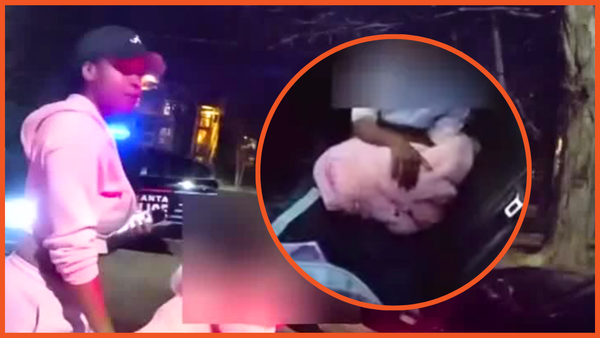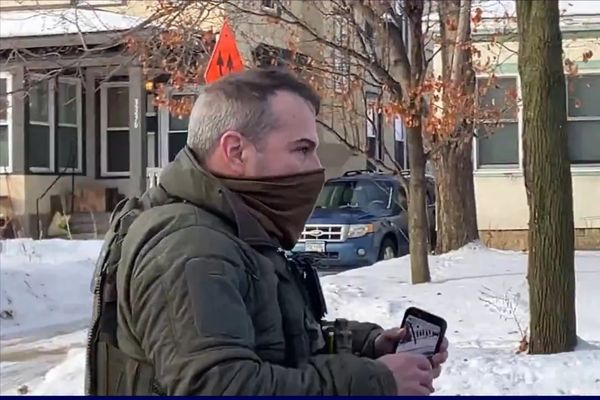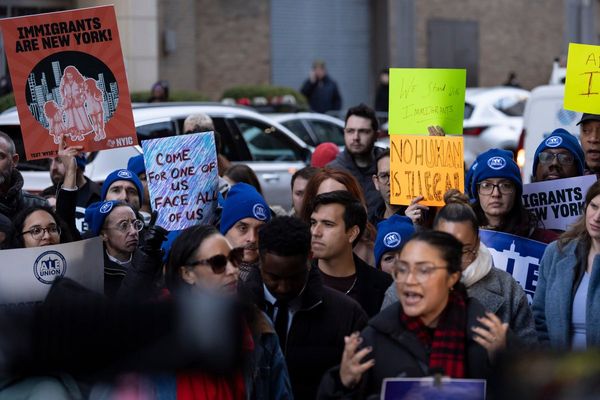SAN DIEGO — Padres infielder Fernando Tatis Jr. has served 17 of his 80-game doping suspension by Major League Baseball and forfeited the first installment of what could be $2.9 million in lost wages. He’s met with the owner, the general manager, teammates, the media, apologizing profusely for “my mistakes,” expressing “how truly sorry I am,” explaining “how my dreams have turned into my worst nightmares.”
That’s the easy part. The hard part lies ahead.
“There’s a very long way going forward,” Tatis said.
He was talking about renewing trust with the franchise and its fans after a positive test for the anabolic steroid clostebol, but it’s more cynical, more complicated, than that. Whether you buy his ringworm excuse or not, Tatis is a convicted doper under MLB’s Joint Drug Agreement, and historically, statistically, anecdotally, that means he likely won’t be the same player he was before, at least in the short term.
It’s a small sample size and hardly scientific, but of the last 10 MLB position players slapped with an 80-game or longer suspension, nine experienced a dip in performance when they returned later that year or into the following season.
Second baseman Robinson Cano was busted for a second time during the 2020 offseason and missed all of 2021. Batted .316 with a .896 OPS in 2020 … and has bounced around with the Padres and two other clubs in 2022, hitting .150 with a .373 OPS.
Catcher Welington Castillo batted .282 with an .813 OPS in 2017 before testing positive a couple months into the 2018 season. He batted .241 after returning in 2018, .209 in 2019, .143 in the minors in 2021 and retired.
Outfielder Jorge Bonifacio had a promising rookie year with Kansas City Royals in 2017 (.255, 17 HR, .752), then, at age 24, got popped for the anabolic steroid boldenone at spring training. His numbers plummeted and he’s wallowing in the minors now.
On and on it goes: Ramon Laureano, Tim Beckham, Starling Marte, Dee Gordon, Abraham Almonte …
Some of it might be attributable to not seeing major league pitching for half a season or more. Some might be the mental stigma of being labeled a cheater. Some might be age and the downslope of a career. Some might be organizational politics and a lack of opportunity.
And some might be the Joint Drug Agreement, which suddenly grows fangs for prior offenders and becomes closer to gold-standard Olympic testing protocols than a collectively-bargained pro sports program where the holes in the net are easier to slip through. Future punishments are stiffer, testing more frequent, lab analysis more sophisticated, scrutiny more suspicious.
“The risk-reward analysis changes,” says Victor Conte, the mastermind of the BALCO doping empire and one of the few people who speaks candidly on the taboo subject. “For some, that’s too much of a risk. As long as you’ve got that big contract in place, why take the risk of being caught a second time?”
Tatis Jr. now faces a 162-game suspension if caught again for an anabolic agent and the irremovable stench of doping that can’t be explained away by ringworm medication from the Dominican Republic. He’s facing at least nine additional tests per year — six urine, three blood — for the remainder of his career, which, with the minimum three per season everyone else faces, could amount to 150 over the remaining 12 years of his back-loaded, $340 million contract.
He’s still only 23. That’s a lot of chances for one to come back positive, either inadvertently or for more sinister reasons.
Another positive in 2024 would cost him $11 million. In 2025, $20 million. In 2027, $25 million. In 2029 and beyond, $36 million.
A third positive brings a lifetime ban and terminates the contract.
But it goes deeper than that.
Back when Conte was doping athletes, he used a designer steroid called THG that acted similarly to known anabolics but was tweaked chemically just enough to avoid detection and punishment. The steroid rules have been rewritten since them, allowing for anti-doping authorities to sanction athletes for anything that resembles a known steroid, whether or not it appears on the banned list.
“It ended the designer steroid era,” Conte says. “Have you heard of a designer steroid since then? What does this mean? Everybody went old school and used fast-acting testosterone.”
The idea is to microdose each night with testosterone patches, gels or lozenges that deliver a small amount of the muscle-building hormone aimed at maintenance and recovery during a long, hot season. Testosterone levels spike while you’re sleeping (and can’t be tested) and return to normal when you show up at the clubhouse the next afternoon (and can be tested). And standard urine screens can’t distinguish between synthetic and natural sources of testosterone, only if the overall level is out of whack.
A different test was developed, called carbon isotope ratio or IRMS (Isotope Ratio Mass Spectrometry). It can find exogenous or synthetic testosterone, but it is considerably more expensive and time consuming. Because of this, it isn’t used on most MLB urine samples unless certain chemical markers are triggered — and microdosing keeps you from triggering them.
Even if your sample is randomly selected for IRMS testing, it’s still possible to beat it through microdosing since, Conte says, the thresholds for a positive result aren’t set as low as they could or should be.
Still, you’re playing with fire, and the more urine tests that go straight to IRMS, the riskier microdosing — baseball’s doping method of choice, many insiders say — becomes.
Now squint at the fine print of the Joint Drug Agreement. All players are tested in spring training, at least once during the season and at least once during the offseason, and one of those likely will go to IRMS. Prior offenders undergo an extra half-dozen urine tests, and all of them could go to IRMS since the program’s medical director — Christiane Ayotte of the respected Montreal anti-doping lab — has “absolute discretion” to order that.
When a urine sample arrives at the lab, it is identified only by a number, not a name. But it also is accompanied by a player’s personal chemical profile and doping history, and it’s standard procedure in the Olympic testing world for prior offenders to receive more scrutiny and more extensive testing. And Ayotte comes from the Olympic testing world.
Another factor: When players are selected for testing during the regular season, they know there’s a good chance they won’t be selected again — opening a potential window to dope. Prior offenders could be tested … and then again the next day, and the next, and the next. Or a week later. Or not for another couple months, then every day for a week.
It doesn’t mean prior offenders wanting to juice will definitively be caught; there are other, more sophisticated substances that labs can’t test for. What it does mean is their options are limited, the net has fewer holes, the consequences are harsher, the risks are greater.
It raises further questions why Tatis, if his positive test was indeed the result of using a clostebol-laced topical medication for ringworm, didn’t push forward with an appeal, which is not allowed for certain anabolic agents but is for clostebol because of the documented possibility for inadvertent use. A player proving he “bears no significant fault or negligence” can have his suspension reduced as low as 30 games. More importantly, those receiving reduced suspensions aren’t subject to additional testing for the remainder of their career.
He’s 23. Why not at least take a shot?
“At the beginning, we felt like we had a very strong case moving forward,” Tatis told a media scrum in the Padres dugout. “I really don’t know how the appeal process works. Obviously, I’ve got people advising me and … they advised me that there was no likely (way) we were going to be able to win. So we decided to start serving the suspension right away.”
Maybe he is unlike many of his comrades from the Dominican Republic, which has a known doping culture and which has accounted for 80% of MLB’s positive tests over the past five years. Maybe he is genuinely clean and confident he won’t test positive again. Maybe he’ll continue smacking home runs and swiping bases at the same, preposterous rate as before. Maybe he has nothing to worry about.
But there’s a very long way going forward.







